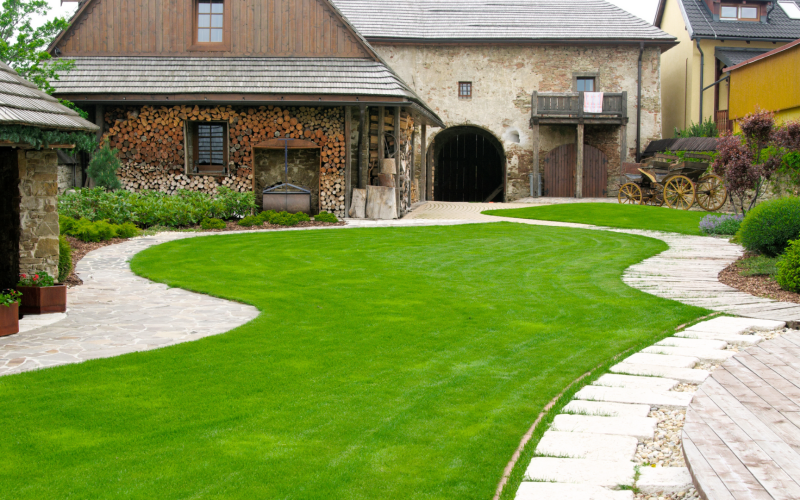Hydroseed: The First Step to Stunning and Long-Lasting Greenery
Hydroseeding, also known as hydraulic mulch seeding or hydro-mulching, is a cost-effective and efficient method of establishing a lush, green lawn or landscape. This innovative technique involves spraying a mixture of grass seed, mulch, and fertilizer onto the soil using a specialized machine. The mixture is applied in a uniform layer, ensuring even coverage and optimal growth conditions for the seeds. Hydroseeding is widely used for residential and commercial landscaping, erosion control, and soil stabilization projects.
Benefits of Hydroseeding
Hydroseeding offers numerous benefits over traditional seeding methods. One of the most significant advantages is its ability to prevent soil erosion, which is particularly important for sloping or uneven terrain. The mulch component of the hydroseed mixture helps to hold the soil in place, reducing the risk of erosion and runoff. Additionally, hydroseeding promotes faster germination and establishment of the grass, resulting in a lush, green lawn in a shorter period. This method is also more cost-effective than traditional seeding, as it eliminates the need for manual seeding, fertilizing, and mulching.
How Does Hydroseeding Work?
The hydroseeding process involves several key steps. First, the area to be seeded is prepared by removing any debris, rocks, or weeds. Next, a specialized machine is used to mix the grass seed, mulch, and fertilizer into a uniform solution. The mixture is then sprayed onto the prepared soil using a high-pressure hose. The mulch component of the mixture helps to retain moisture, suppress weeds, and regulate soil temperature, creating an optimal environment for seed germination and growth. Once the mixture is applied, the area is typically watered regularly to ensure proper establishment of the grass.
Types of Hydroseeding Mixtures
There are various types of hydroseeding mixtures available, each designed for specific applications and soil conditions. The most common mixtures include a combination of grass seed, wood fiber mulch, and fertilizer. However, some mixtures may also include additional components, such as soil conditioners, pH adjusters, or erosion control agents. The type of mixture used will depend on the specific needs of the project, including the soil type, climate, and intended use of the area.
Applications of Hydroseeding
Hydroseeding is a versatile technique that can be used for a wide range of applications. Some of the most common uses include residential and commercial landscaping, erosion control, soil stabilization, and mine reclamation. Hydroseeding is also used for highway and roadside landscaping, as it provides a cost-effective and efficient method of establishing vegetation in these areas. Additionally, hydroseeding can be used to establish vegetation on steep slopes, embankments, and other areas where traditional seeding methods may be impractical.
Tips for Successful Hydroseeding
To ensure successful hydroseeding, several key factors must be considered. First, the area to be seeded must be properly prepared, including removing any debris, rocks, or weeds. Next, the hydroseeding mixture must be applied uniformly and at the correct rate. Adequate watering is also essential, as it helps to establish the grass and prevent erosion. Finally, regular maintenance, including mowing, fertilizing, and pest control, is necessary to ensure the long-term health and appearance of the lawn or landscape.
Conclusion
Hydroseeding is a highly effective and efficient method of establishing a lush, green lawn or landscape. This innovative technique offers numerous benefits, including erosion control, faster germination, and cost savings. By understanding the hydroseeding process, types of mixtures, and applications, individuals can make informed decisions about using this technique for their landscaping needs. With proper preparation, application, and maintenance, hydroseeding can result in stunning and long-lasting greenery that enhances the beauty and value of any property.





Comments
Post a Comment